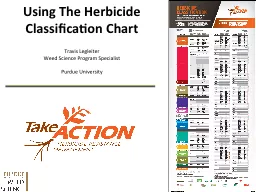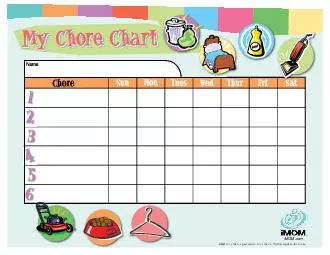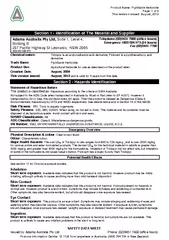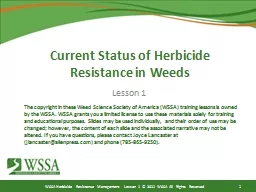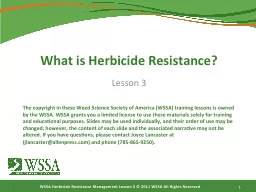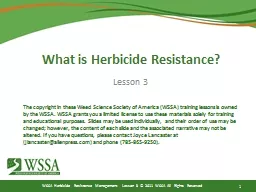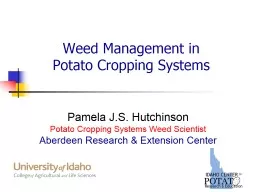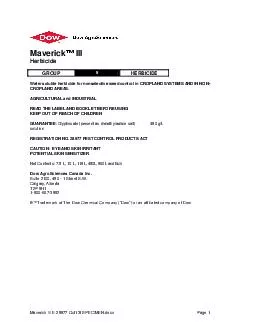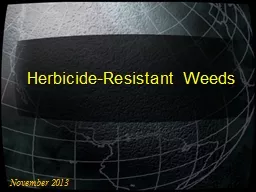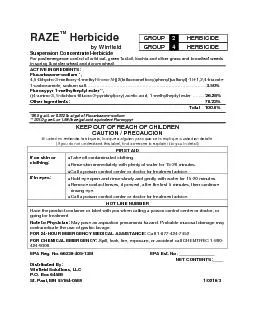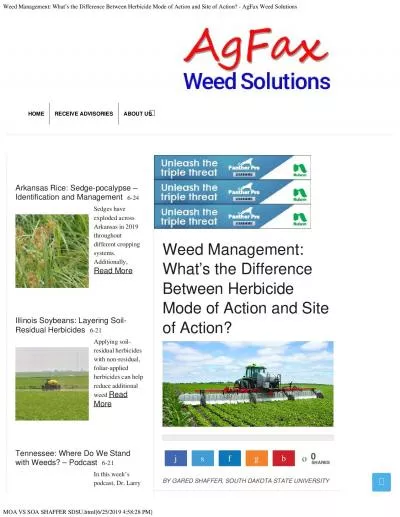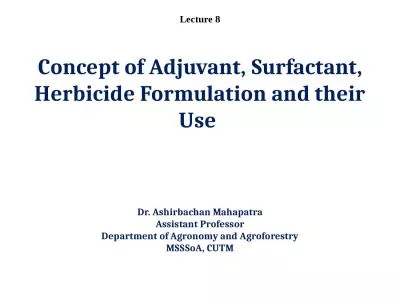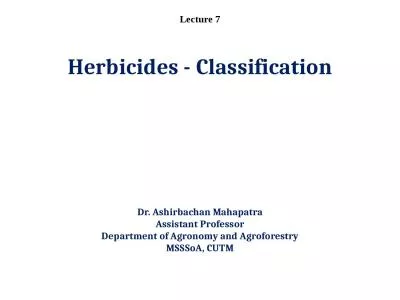PPT-Using The Herbicide Classification Chart
Author : cora | Published Date : 2022-02-24
Travis Legleiter Weed Science Program Specialist Purdue University Classification Chart is a redesign of former Herbicide MOA chart Part of the Take Action effort
Presentation Embed Code
Download Presentation
Download Presentation The PPT/PDF document "Using The Herbicide Classification Chart" is the property of its rightful owner. Permission is granted to download and print the materials on this website for personal, non-commercial use only, and to display it on your personal computer provided you do not modify the materials and that you retain all copyright notices contained in the materials. By downloading content from our website, you accept the terms of this agreement.
Using The Herbicide Classification Chart: Transcript
Travis Legleiter Weed Science Program Specialist Purdue University Classification Chart is a redesign of former Herbicide MOA chart Part of the Take Action effort Access to chart and other resources. 200 gL PRESENT AS METHYL SULFATE REGISTRATION NO 12853 PEST CONTROL PRODUCTS ACT WARNING POISON IN CASE OF EMERGENCY ENDANGERING LIFE OR PROPERTY INVOLVING THIS PRODUCT CALL DAY OR NIGHT 13232643910 READ THE LABEL AND ATTACHED PAMPHLET BEFORE USING com Trade Name Fightback Herbicide Product Use Agricultural herbicide for use as described on the product label Creation Date August 2004 This version issued August 2012 and is valid for 5 years from this date Section 2 Hazards Identification Statement Lesson 1. The copyright in these Weed Science Society of America (WSSA) training lessons is owned by the WSSA. WSSA grants you a limited license to use these materials solely for training and educational purposes. Slides may be used individually, and their order of use may be changed; however, the content of each slide and the associated narrative may not be altered. If you have questions, please contact Joyce Lancaster at (jlancaster@allenpress.com) and phone (785-865-9250).. Lesson 3. 1. The copyright in these Weed Science Society of America (WSSA) training lessons is owned by the WSSA. WSSA grants you a limited license to use these materials solely for training and educational . Lesson 3. 1. The copyright in these Weed Science Society of America (WSSA) training lessons is owned by the WSSA. WSSA grants you a limited license to use these materials solely for training and educational . Potato . C. ropping . S. ystems. Pamela J.S. . Hutchinson. Potato Cropping Systems Weed Scientist. Aberdeen . Research & Extension Center. Weed Management in . Potatoes: Lecture topics. Weed – Potato . Page 1 Maverick ™ III Herbicide GROUP 9 HERBICIDE Water soluble herbicide for nonselective weed control in CROPLAND SYSTEMS AND IN NON - CROPLAND AREAS. AGRICULTURAL and INDUSTRIAL READ THE L Rich Hoormann. EC Region Agronomist. Cover Crops and Weed Potential. Rye. Wheat . Oats. Red clover. White clover. Lespedeza. Medics. Crimson clover. Other legumes. Hairy vetch. Rape. Radish. Turnips. November 2013. Herbicide Resistance. Definition. inherited ability of a weed or crop . biotype. to. survive a herbicide application to which the. original population was susceptible. . Biotype = a group of plants within a species that has . 4,5-Dihydro-3-methoxy-4-methyl-5-oxo--[[2(trifluoromethoxy)phenyl]sulfonyl]-1-1,2,4-triazole-1-carboxamide, sodium salt Arkansas Rice: Sedge-pocalypse –Identification and Management Sedges haveexploded acrossArkansas in 2019throughoutdifferent croppingsystems.Additionally,Read More Illinois Soybeans: Layering Soi Dr. Ashirbachan Mahapatra. Assistant . Professor. Department of Agronomy and Agroforestry. MSSSoA. , CUTM. Lecture . 8. Adjuvant . An . adjuvant is an additive that is intended to improve the effectiveness of a herbicide. Dr. Ashirbachan Mahapatra. Assistant . Professor. Department of Agronomy and Agroforestry. MSSSoA. , CUTM. Lecture . 7. Classification based on chemical nature . Herbicides are . primarly. grouped into .
Download Document
Here is the link to download the presentation.
"Using The Herbicide Classification Chart"The content belongs to its owner. You may download and print it for personal use, without modification, and keep all copyright notices. By downloading, you agree to these terms.
Related Documents

